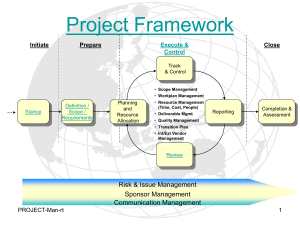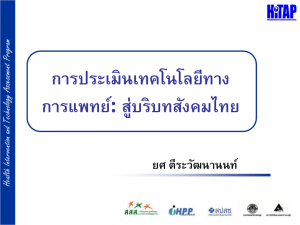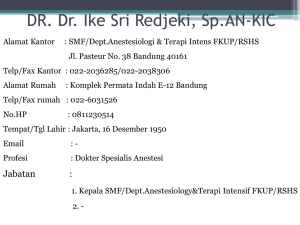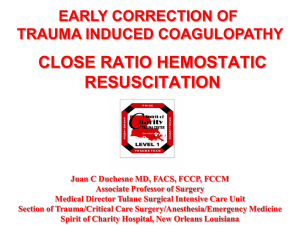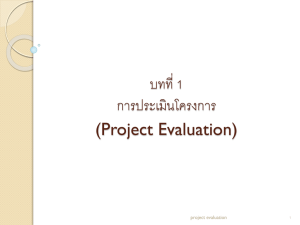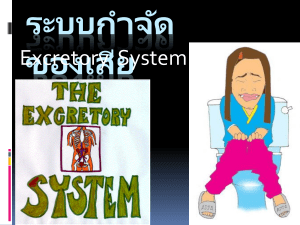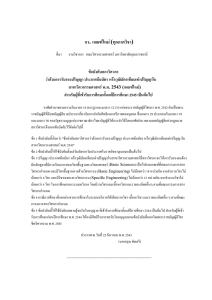ThemeGallery PowerTemplate
advertisement
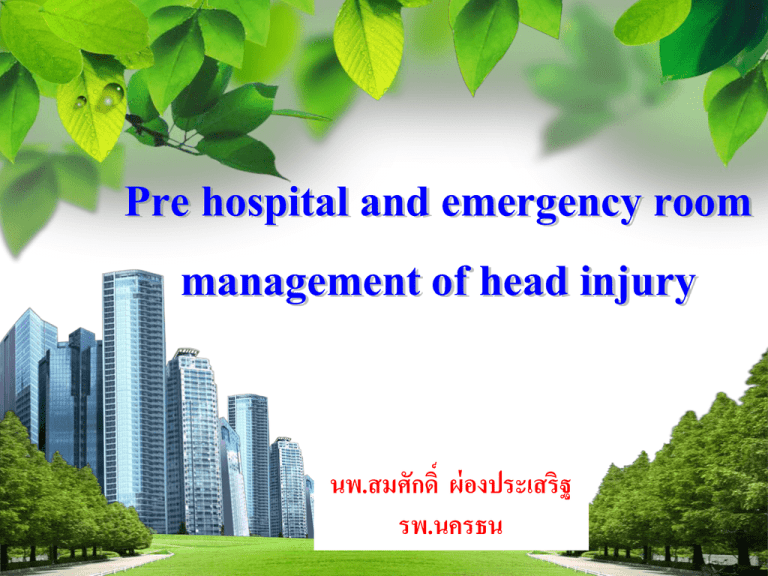
Pre hospital and emergency room management of head injury นพ.สมศักดิ์ ผ่ องประเสริฐ L/O/G/O รพ.นครธน Intracranial secondary injury • • • • • • Brain edema Increased intracranial pressure Delayed intracerebral hematoma Hyperemia Vasospasm Seizure ฯลฯ Extracranial secondary injury ภาวะแทรกซ้ อน Hypoxia (PaO2 <60 mmHg) Hypotension (Systemic BP≤ 90mmHg) Electrolyte imbalance อื่นๆ สาเหตุ Respiratory arrest Airway obstruction Adult respiratory distress syndrome Aspiration pneumonia Pneumothorax / hemothorax Pulmonary contustion Shock Excessive bleeding Myocardial infraction Cardiac contusion or tamponade Spinal cord injury Tension pneumothorax Diabetes insipidus Syndrome of inappropriate secretion of Antdiuretic hormone Anemia Hyperthermia Hypercarbia , hypocarbia Hypoglycemia , heperglycemia การคัดแยกผู้บาดเจ็บ Triage Trauma patient Definite care Primary survey Adjunct Resuscitation Secondary survey Adjunct Primary survey & Resuscitation A : Airway with cervical spine control B : Breathing C : Circulation D :Disability E : Exposure / Environment semi-rigid cervical collar in-line immobilization B : Breathing and ventilation • • • • • Tension pneumothorax Flail chest Open pneumothorax ( sucking chest wound ) Massive hemothorax Cardiac temponade C : Circulation and hemorrhage control Classification of blood loss Class Ⅰ Class Ⅱ Class Ⅲ Class Ⅳ Blood loss (ml) Up to 750 750-1500 1500-2000 > 2000 Blood loss (% blood volume) Up to 15% 15-30% 30-40% > 40% Pulse rate < 100 > 100 > 120 > 140 Blood pressure Normal Normal Decreased Decreased Pulse pressure (mmHg) Normal Decreased Decreased Decreased Respiratory rate 14-20 20-30 30-40 > 35 Urine output (ml/hr) > 30 20-30 5-15 Negligibic CNS/ mental status Fluid replacement Slightly anxious Mildly anxious Crystalloid Crystalloid Anxious, confused Confused, lethargic Crystalloid, blood (3:1 rule) ดัดแปลงจาก Advanced Trauma Life Support Student Course Manual 7th edition Crystalloid, blood D : Disability : Neurologic status - การประเมินระดับความรู้สึก ได้แก่ • Glasgow Coma Scale ( GCS ) ประกอบด้วย การประเมิน Eye response, Verbal response cและ Motor response • AVPU response ประกอบด้วย A-Alert , V-Respond to Vocal stimuli, P-Respond only to Painful stimuli, U-Unresponsive to all stimuli - การประเมิน localizing sign ได้แก่ การประเมิน pupils response, การประเมินภาวะอ่อนแรงของร่ างกายซีกใดซีกหนึ่ง E : Exposure / Environment control - ควรตรวจร่ างกายทั้งตัว โดย • ใช้ Spinal log roll • ถอดเสื้ อผ้าทั้งหมด - Pitfall ที่อาจผิดพลาด • หลัง • ขาหนีบ • อวัยวะเพศ • ท้ายทอยและศีรษะด้านหลัง (ไรผม) • ทวารหนัก ( PR ) • การสวนปัสสาวะ ( Cath ) Adjuncts to primary survey and resuscitation 1. Monitoring • EKG • Pulse oximetry • End-tidal CO2 • การใส่ สายสวนปัสสาวะ • การใส่ nasogastric tube 2. Investigation • CBC , BUN , Creatinine , Electrolyte • Trauma film : C-spine lateral view, Chest x-ray AP view, Pelvis film AP view • Focused Assessment Sonographic on Trauma ( FAST ) disgnostic peritoneal lavage ( DPL ) Secondary survey เป็ นการตรวจหาพยาธิ สภาพ อย่างละเอียด หลังจากที่ผบู้ าดเจ็บพ้น ภาวะวิกฤตแล้ว การซักประวัติ • A = Allergies • M = Medications currently used • P = Past illnesses/Pregnancy • L = Last meal • E = Events/Environment related to the injury การตรวจร่ างกาย จะต้องตรวจร่ างกาย จะต้องตรวจร่ างกายอย่าง ละเอียดตั้งแต่หวั จรดเท้า Adjuncts to secondary survey การตรวจพิเศษต่าง ๆ เช่น • • • • CT scan Urethrogram Esophagoscopy Bronchoscopy Definite care • Craniotomy • Explore Lab • ICU สรุป 1. การประเมินและดูแลผูบ้ าดเจ็บในเบื้องต้น 2. สาหรับการบาดเจ็บที่ศีรษะ • ใช้แนวทาง ATLS จะต้องค้นหาการบาดเจ็บอวัยวะ อื่นนอกเหนือจากสมอง ( Multiple injuries ) • ป้ องกันและรักษาภาวะ Hypotension และ Hypoxia • ใส่ Endotracheal tube ทุกรายในผูป้ ่ วยที่มี GCS <9 • ยา Sedative ให้เมื่อพร้อมตรวจด้วยภาพรังสี คอมพิวเตอร์สมอง Traumatic brain injury care map Thank You L/O/G/O
